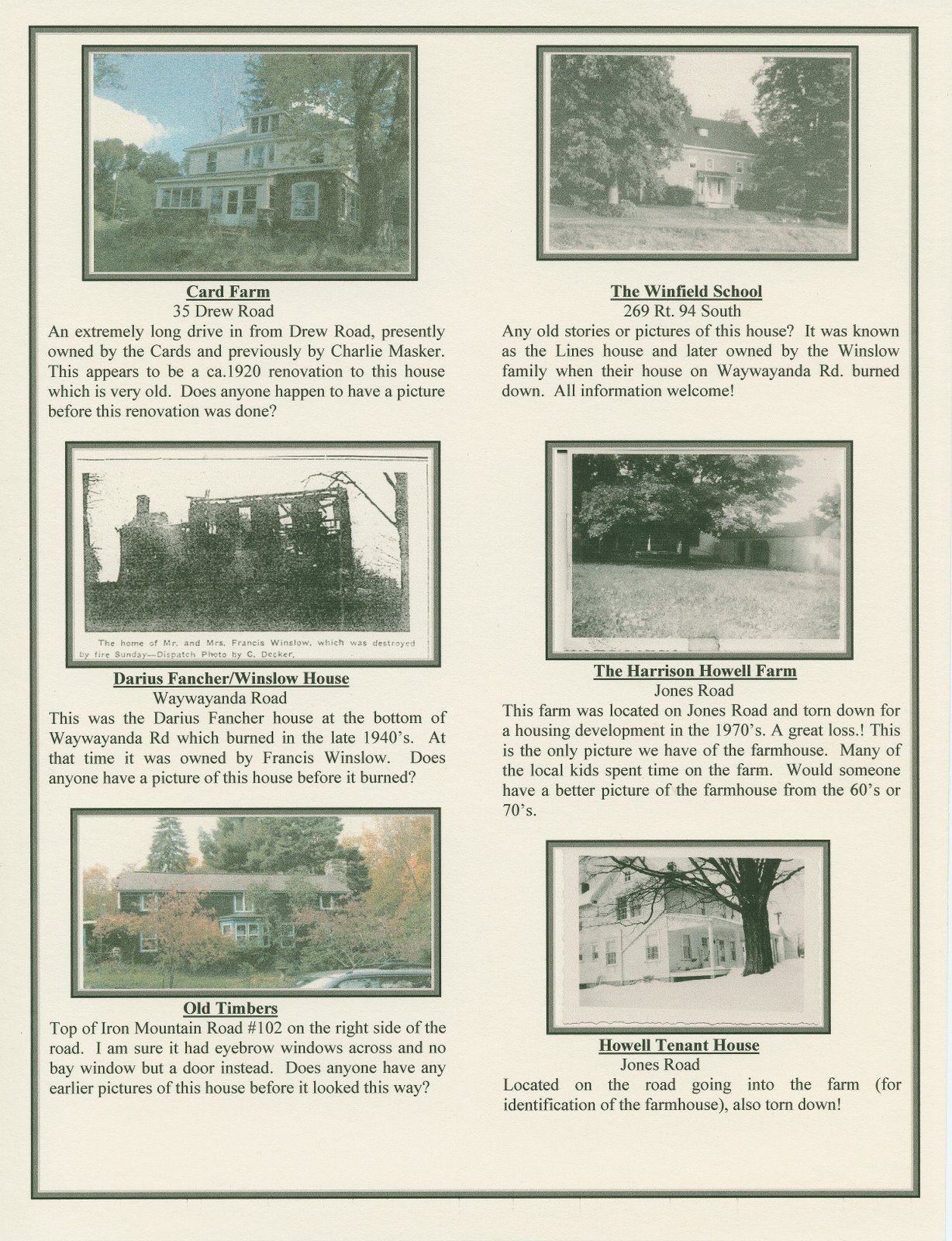New Milford
(Jockey Hollow)
Sketch of a Hamlet
As settlements expanded along the Hudson River in the 1600's, pioneers ventured inland for new frontiers. In 1703 Queen Anne of England granted a land patent to twelve speculators from Manhattan called the Waywayanda Patent. In 1706, each one was assigned a particular share. New Milford lands were a part of Christian Christiansee, Derek Vanderberg and John Bridges patent shares.
Sprawling down the beautiful mountains of Vernon, New Jersey into the valley, not far from the Appalachian Train, lay the fertile lands of Jockey Hollow, being fed by rushing mountain creeks and streams. Our first acknowledged settler, as the story goes, was said to be Thomas J. Kearns in 1710, who built a house or log cabin at the foot of Barrett Road and cleared his land. In 1730, this immense property and house was purchased by David McCamley, who came from Northern Ireland with his young wife. The McCamleys grew crops and raised sheep with the help of their slaves and built the first mill for grain, fulling and carding near Sanfordville in 1760.
In 1726, Thomas DeKay from Manhattan made a large patent purchase of 2,500 acres and built a house and farmed with the help of slaves and also had many tenant farmers on his land. Unfortunately with the ongoing Border War in Vernon, most of his property which was in New York, in ca. 1760 ended up in New Jersey when the borders were finalized. This was after he died.
In early times our hamlet was called Jockey Hollow and later renamed New Milford. George Washington came through at different times with his army, marching from Belvedere or Morristown, NJ on their way to Newburgh, NY. They traveled along the Kings Highway (Rt. 94 today) which dates back to ca.1730. His soldiers were said to camp here in New Milford near the McCamley house in the fields and race their horses for pastime between the Methodist Church and Borderland Farm. The Kings Highway turned and passed in front of the New Milford Deli and the Methodist Church until the road was changed in the early 1930's. that area was called "the Hollow."
We had a variety of settlers who came here for a "new life" and also who fled religious persecution. Most were English, Irish, Scottish, French Huguenots, Dutch and Germans. After 1804, David C. Demarest started building mills on his property along Green Mine Brook, followed by others. As the years went on, New Milford became a bustling community at the Hollow and Covered Bridge. Grain mills, plaster mills, clover mills, fulling and carding mills and distilleries were all in motion. New Milford was known for producing superior Applejack! The hamlet flourished and at one point had sixteen mills and was larger than Warwick. Unfortunately, two large fires, which took place a few years apart ca.1900 destroyed many buildings and the town never recovered.
Most of our farms were dairy farms or apple and peach orchards. The people worked hard, raised their families, and were proud to be farmers. As early as 1750 there were farms here and we find sporadic notes on deeds, but no early formal documentation. New Milford has a proud heritage, which the New Milford Historical Society strives to keep alive and continue discovering. there is much more fascinating history yet to be uncovered, and I invite you to join me in my quest! If you sit outside on a quiet summer night, you may still hear the sound of oxen pulling their wagons full of iron ore from Waywayanda, down Iron Mountain Road to the foundries.
Anita Panas


